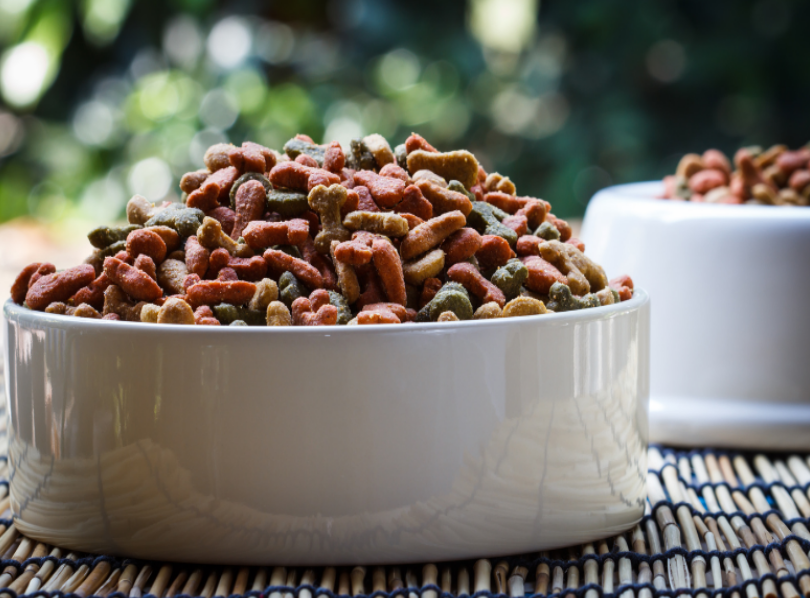How to Find the Right Food for Your Dog
Are you trying to choose Dog Food for your dog? Proper nutrition is one of the most basic needs of dogs.
A good diet is one of the best ways to keep your dog healthy. Unfortunately, thousands of dog food options are available, so choosing the right dog food can be challenging.
Opinions about canine nutrition vary among vets, breeders, trainers and other dog owners. The bottom line is that even the experts don’t always agree on the best type of dog food.
That’s because there is not just one answer.
Ultimately, you are the one who needs to decide what food best suits your dog.
You’ll need to consider the type of food, quality of ingredients, and cost to fit your budget.
Do plenty of research so you can make an informed decision about your dog’s diet.
Get Educated About Nutrition Choices
There’s a lot of information about canine nutrition available online. However, caution when the following advice is online, as not all the information you find will be reliable.
Some websites are more reliable than others. However, your veterinarian is always the best resource. If you still have questions about feeding your dog, you may want to ask for a referral to a veterinary nutritionist.
In general, commercial dog food choices boil down to the following categories:
- Holistic / Natural Commercial Diets
- Veterinary Prescription Diets
- Premium Dog Food
- Economy / Generic Dog Food
- Whole food cooked diets
- Raw food / BARF Diets
Most commercial diets are usually available in wet or dry. Some also come in a dehydrated form that you add water to before feeding.
Choose dog food by category that best suits your dog, then research food companies.
To compare foods, check out DogFoodAdvisor.com. Also, don’t forget to ask your vet for advice.
Some people prefer to avoid commercial diets altogether and make their dog’s food at home. In addition, dog food recalls have made some people afraid to feed commercial dog foods, regardless of quality.
However, making your dog’s food from scratch requires care to ensure it’s complete and balanced.
For information about preparing your homemade diets, learn how to do it correctly on a site like BalanceIt.com or PetDiets.com.
Read Dog Food Labels
The Association of American Feed Control Officials (AAFCO) has developed dog and puppy nutrition profiles.
These standards are reflected on the dog food label. This information will give you an idea of the food’s content, but beware: tags can be misleading.
Just because a food meets AAFCO requirements, it does not mean that it is the best food for your dog.
Look for food companies that exceed AAFCO guidelines and use high-quality ingredients. Choose foods with meat-based items listed as the first two to three components.
Avoid foods that contain excess chemical preservatives and high amounts of fillers like wheat, corn, and soy.
Ask People About Dog Food
Once you have done your research and decided on a general food category, ask others for their opinions about specific brands or recipes.
Your veterinarian is a great place to start. You can also talk to dog breeders, trainers, and groomers for more opinions.
Your local pet supply store may also be of assistance, especially if it is a smaller, independent shop that carries top-quality diets.
Educated pet professionals can give you their recommendations, but remember that not all experts agree on canine nutrition.
The same goes for talking to other pet owners. Be prepared to get conflicting advice, then take that information and research it on your own.
Keep in mind that different dogs can react differently to the same food. Use the information you gain to narrow your options further, but remember that opinions are not facts.
Feeding Your Dog
Many dog food companies offer samples or money-back guarantees, so let your dog try the food before you finalize your decision. Bring home a few varieties to see which is the most palatable.
When you have settled on a portion of food, gradually change your dog’s diet, adding a little more new food to the old food each day over several days.
Once your dog is exclusively eating the new diet, it may be 3-4 weeks before you see changes in your dog’s overall appearance and attitude.
However, if your dog develops signs of illness, see your vet. You may need to change the diet again if it does not agree with your dog in some way.
Your Dog’s Diet Over Time
Many experts recommend rotating diets every 2-6 months if you are feeding commercial dog food. This typically means changing to a new food company.
Offering a variety of formulas within that company can benefit many dogs. When feeding homemade diets, a variety of foods should be provided.
However, it is always important to use recipes for complete and balanced dog food. Feeding the same food all the time can become boring for your dog.
It is also believed that this can lead to allergies and other diseases. Remember that the needs of individual dogs can vary. As always, consult your veterinarian about the best food choices for your dog.

